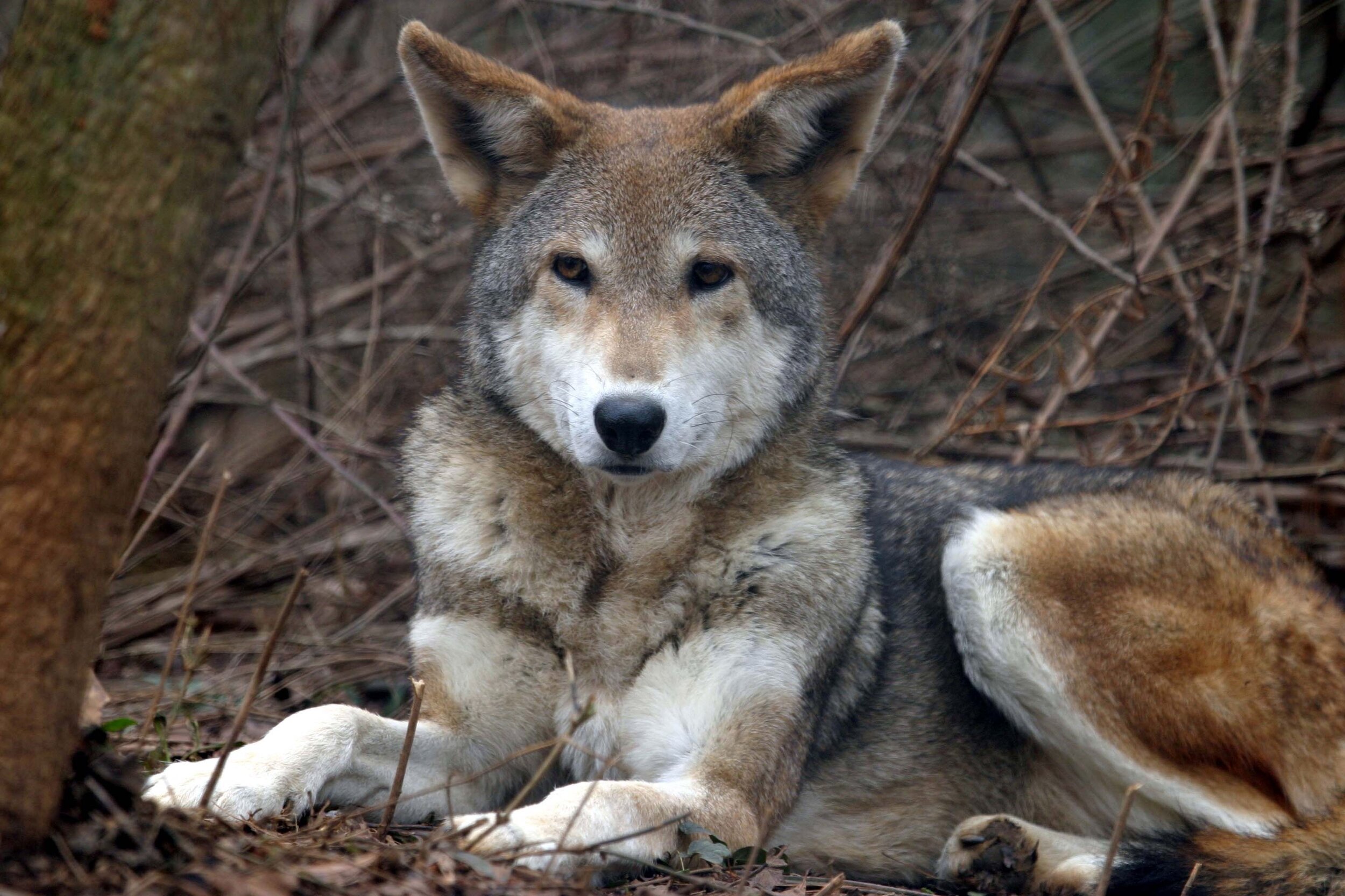How We Protect Red Wolves
The American red wolf is the most endangered canid in the world. With the 10 known wild red wolves roaming a single recovery release site in northeastern North Carolina and approximately 250 in captivity, breeding is critical to this species’ survival.
Reflection Riding is a breeding and exhibit facility for red wolves and has been since its membership in the Red Wolf Species Survival Plan (RWSSP) began in 1996. We’ve had litters in 2007, 2011, 2016, and 2020.
So, what’s the big deal? Why is red wolf breeding a concern?
In 1980, the American red wolf was forced into extinction in the wild to conserve the last 17 remaining red wolves. Of these 17, only 14 were strong enough to begin a captive breeding program. That’s a really small gene pool!
When breeding an endangered species in captivity, it is critical to maintain genetic diversity and grow the family tree. That means maintaining hyper-vigilance over the breeding coefficient and selecting red wolves that are the least genetically alike to breed. Luckily, RWSSP has a geneticist to direct us and a software program that tracks each red wolf’s pedigree — a road map of who’s closely related and who’s less related. Red wolves only breed one time per year, adding another variable to the equation.
Red wolves and coyotes can also interbreed. This causes a serious dilution of genes resulting in hybrid offspring. Hybridization can quickly kill the family tree.
What do we do with all this information?
As an institutional representative and management team member, I attend a summit meeting each summer to determine who’s going to breed with whom based on the needs of the population. We must determine how many litters need to be produced to maintain or grow the population (whichever is deemed necessary for that breeding season) and refer to the mean kinship list (a measure of the importance of an animal). We then begin the process of matchmaking.
We’ve transferred red wolves to breed at our facility from as far away as Sioux Falls, SD. Once the red wolf arrives at its new facility, there is usually an acclimation period (we call it “Hey, howdy! time”) where the red wolves are separated by fencing and have limited visual sight and physical proximity. After about a week of this introduction, the red wolves are placed in the same enclosure, and with a little luck, they like each other and the relationship begins.
Red wolf breeding season is January through March, with the most northwestern facilities typically breeding last. After a 63-day gestation period, pups are born in April and May. Litters can range from a single pup to a litter of nine. Eyes and ears open after two weeks, and pups begin to wander out of the birthing place after about five weeks.
In some cases when a genetically valuable red wolf has not bred, artificial insemination can be an option. Reflection Riding was fortunate enough to participate in this research. Males’ sperm is collected and cryopreserved for future use. The research team that worked on this project consisted of our veterinarian, Dr. Chris Keller, his team from Mountain Hospital for Animals, and two post-doc students.
Luckily, red wolves breed fairly well in the wild and in captivity once they have found the right mate and are of breeding age. Reflection Riding has been fortunate enough to have successful pairs and has two breeding pairs this 2021 season. As a very involved cooperator in the RWSSP, it’s our duty to support this program and this magnificent species.





